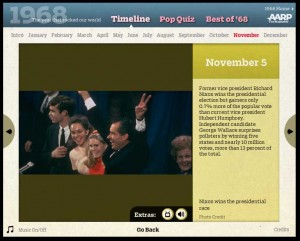 Although I covered pop music at a time when punk, hardcore, “alternative” rock, rap and hip hop were the coolest sounds, I always had a soft spot for the sweet sugar of pure pop. I once wrote an essay comparing Michael Jackson to Prince, as if Jackson were the Beatles and Prince were the Rolling Stones. In my essay, MJ won out (but this was before MJ got weird).
Although I covered pop music at a time when punk, hardcore, “alternative” rock, rap and hip hop were the coolest sounds, I always had a soft spot for the sweet sugar of pure pop. I once wrote an essay comparing Michael Jackson to Prince, as if Jackson were the Beatles and Prince were the Rolling Stones. In my essay, MJ won out (but this was before MJ got weird).
I was, it’s true, a Beatles fan over the Stones. And a lot of the reason was the vocals, not just the pop brilliance of the Lennon-McCartney and Harrison songs. I loved the Beatles’ harmony. When I listen to Beatles songs, I can hear their voices dancing and meshing with each other; sometimes trading melody for harmony, sometimes taking an aural upfront position, sometimes laying back.
That’s the same quality that turned me on to artists such as Simon & Garfunkel in spite of Paul Simon’s brainy-nerdy lyrics (I was a brainy nerdy kid, after all, so I identified with him). Simon and Art Garfunkel’s voices were a natural fit, and I still love to hear their duet vocals, especially on their earlier, unadorned music. Their solo recordings, even when they’re great records, don’t thrill me as much as the ones they made together.
Peter, Paul and Mary were for me, the pinnacle of the melody/harmony interplay. Like the Beatles, they could sing high or low parts, and the sound was fuller than a duet to have all three filling in gaps. Yes, PP&M were an “artificial” group, the folk version of the Monkees, who were assembled as a hit-making enterprise by their manager to cash in on the urban folk boom of the times. Following the success of the Weavers, the Kingston Trio and others, Albert Grossman’s formula for pop success was to bring together “a tall blonde, a funny guy, and a good looking guy” and watch the cash flow in. That it did.
But they also rose above their commercial crassness and made some fine music for the ages. The trio, Noel Paul Stookey, Peter Yarrow and Mary Travers were earnest lefty-touchy-feely folksingers, a natural progression from the Woody Guthrie balladeer of the Depression era forged with the commercially viable groupthink of the ’50s Weavers (where Pete Seeger made his original mark).
They had a string of hits, including folk songs like “500 Miles,” pop ballads like “Lemon Tree” and protest songs like “If I Had a Hammer” and “Where Have All the Flowers Gone.” They popularized the emerging voices of the new generation’s “protest singers” like Bob Dylan (the trio’s take of “Blowin’ in the Wind” is still my favroite of many cover versions and the original). They also sparked the public’s imagination with the silly controversy over “Puff the Magic Dragon” (was it or was it not about smoking pot?), and closed out their hitmaking career with a pair of terrific sunset singles, John Denver’s “Leaving on a Jet Plane” and ” the gospel-infused “Day Is Done.”
They caught the zeitgeist of their times — a spirit of searching and questioning of values, the possibilities of youthful exhuberance, and a lust for life. They still perform to nostalgic crowds, but their golden era was inexorably and permanently affixed to the folk era’s comet.
Continue reading




 Betty James just passed away. Who’s that, you say?
Betty James just passed away. Who’s that, you say? 






